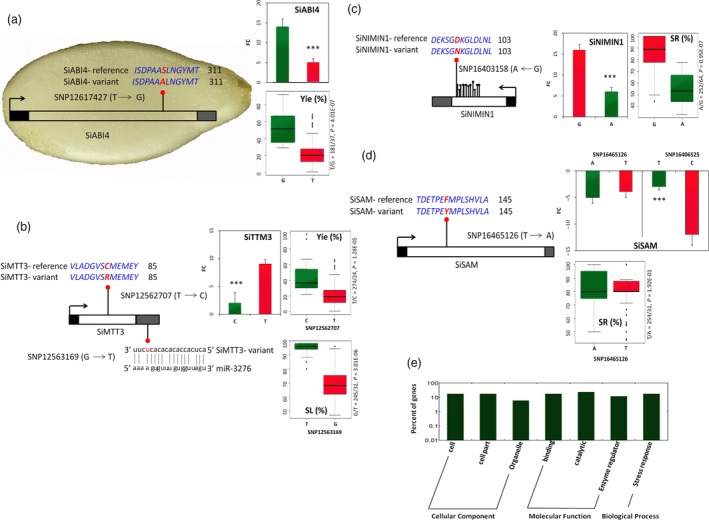Figure 4.

Detecting some candidate genes containing significant SNPs in the stable and pleiotropic drought tolerance QTLs in Sesamum indicum. (a) A missense mutation at the locus SNP12617427 in the coding region of the seed‐specific gene SiABI4 alters the gene expression and the relative seed yield (Yie) between the two haplotype groups; FC means expression fold change and the trait values of the two haplotype groups were compared using t‐tests. Error bars indicate the SD of biological replicates, (***P < 0.001). (b) Two missense mutations in the coding region and UTR‐3′ significantly affects the expression of SiTTM3 and drought tolerance. The polymorphism at the locus SNP12562707 alter the relative seed yield (Yie) between the two haplotype groups while the variant at the locus SNP12563169 influences the binding of miR‐3276 to SiTTM3 and significantly affects the relative stem length (SL). (c) Several synonymous SNPs located in the coding region and a strongly associated missense change at the locus SNP16403158 of the gene SiNIMIN1 significantly affects the gene expression level and the survival rate (SR) between the two haplotype groups. (d) A missense mutation in the coding region of SiSAM (SNP16465126) did not significantly alter the gene expression and the survival rate (SR) between the 2 haplotype groups. However, SiSAM expression was significantly different between the 2 haplotype groups at the peak locus SNP16406525 of the QTLSR8.1, suggesting the existence of another causal variant in SiSAM. (e) Gene ontology analysis of the potential candidate genes around the peaks selected based on their expression fold change under drought treatment.
